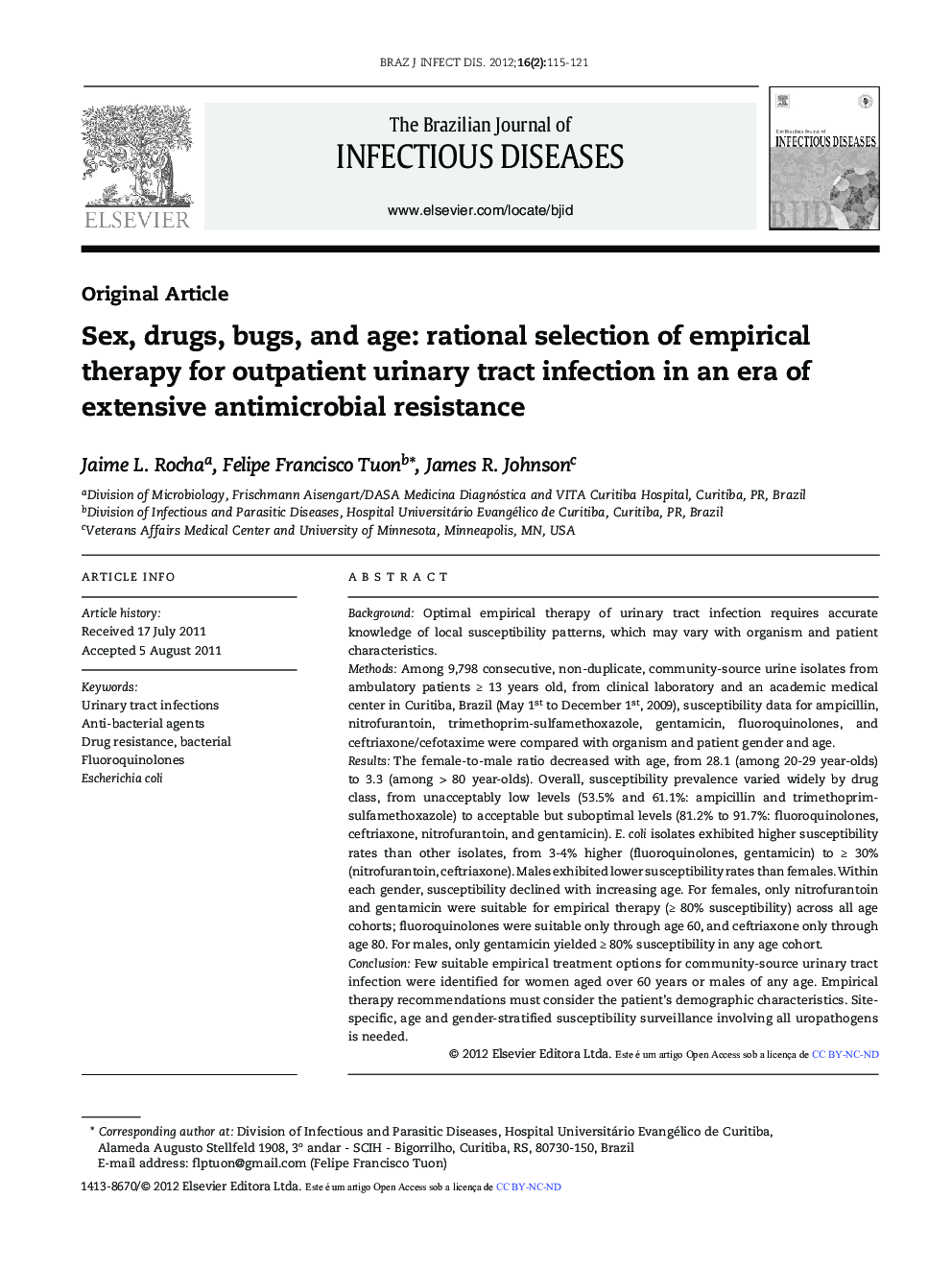| Article ID | Journal | Published Year | Pages | File Type |
|---|---|---|---|---|
| 3344142 | The Brazilian Journal of Infectious Diseases | 2012 | 7 Pages |
BackgroundOptimal empirical therapy of urinary tract infection requires accurate knowledge of local susceptibility patterns, which may vary with organism and patient characteristics.MethodsAmong 9,798 consecutive, non-duplicate, community-source urine isolates from ambulatory patients ≥ 13 years old, from clinical laboratory and an academic medical center in Curitiba, Brazil (May 1st to December 1st, 2009), susceptibility data for ampicillin, nitrofurantoin, trimethoprim-sulfamethoxazole, gentamicin, fluoroquinolones, and ceftriaxone/cefotaxime were compared with organism and patient gender and age.ResultsThe female-to-male ratio decreased with age, from 28.1 (among 20–29 year-olds) to 3.3 (among > 80 year-olds). Overall, susceptibility prevalence varied widely by drug class, from unacceptably low levels (53.5% and 61.1%: ampicillin and trimethoprimsulfamethoxazole) to acceptable but suboptimal levels (81.2% to 91.7%: fluoroquinolones, ceftriaxone, nitrofurantoin, and gentamicin). E. coli isolates exhibited higher susceptibility rates than other isolates, from 3–4% higher (fluoroquinolones, gentamicin) to ≥ 30% (nitrofurantoin, ceftriaxone). Males exhibited lower susceptibility rates than females. Within each gender, susceptibility declined with increasing age. For females, only nitrofurantoin and gentamicin were suitable for empirical therapy (≥ 80% susceptibility) across all age cohorts; fluoroquinolones were suitable only through age 60, and ceftriaxone only through age 80. For males, only gentamicin yielded ≥ 80% susceptibility in any age cohort.ConclusionFew suitable empirical treatment options for community-source urinary tract infection were identified for women aged over 60 years or males of any age. Empirical therapy recommendations must consider the patient's demographic characteristics. Site-specific, age and gender-stratified susceptibility surveillance involving all uropathogens is needed.
